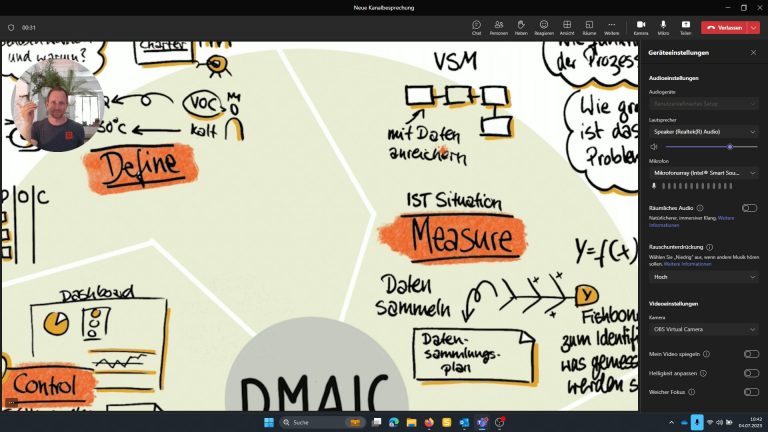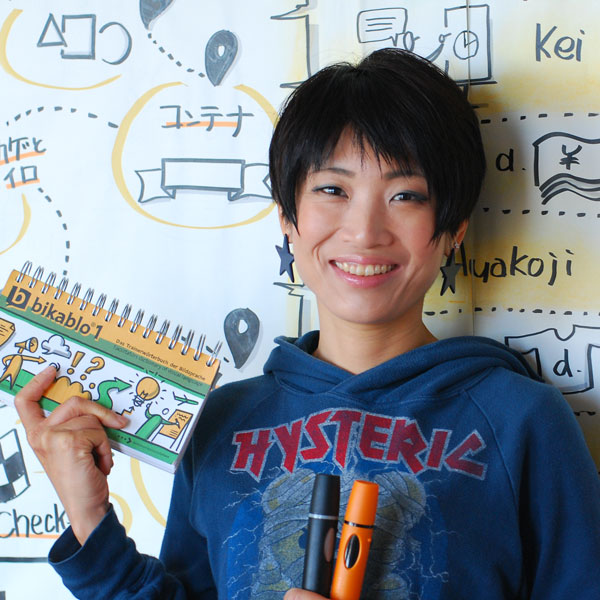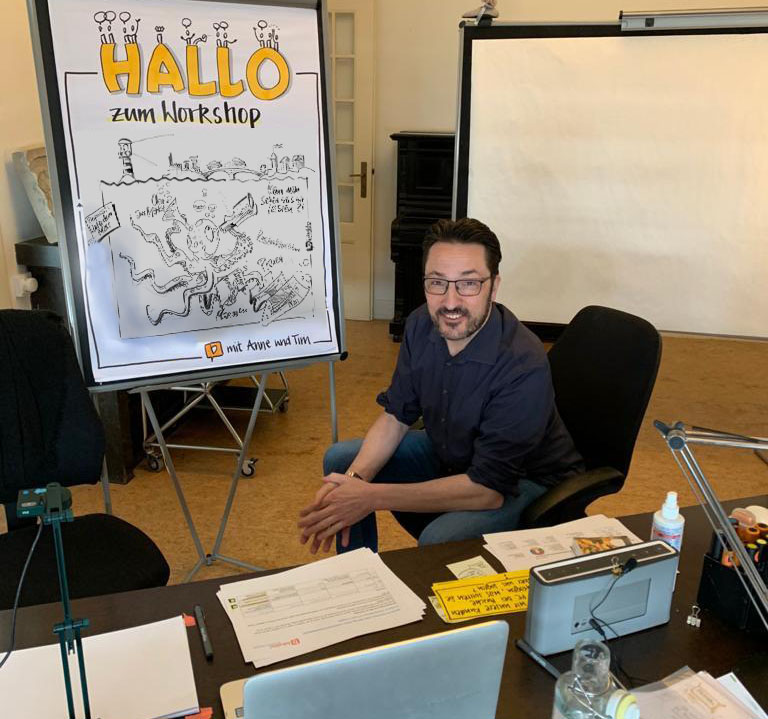With great passion for processes
Do what you love. I like to carry this sentence from the Holstee Manifesto with me. I am happy that I could marry two of my passions: Visual Facilitation and Process Optimization. The result: Visual Process Mapping.
For example, we also use the advantages of figurative language in process descriptions to reach a consensus as quickly as possible about what we actually want to talk about. The possibility of documenting and triggering emotions through visualization holds enormous potential, especially since this does not take place in “normal” process mapping.
This terrain, which has hardly been explored anywhere in the world, is one of the research areas I am working on, especially with my colleagues Martin Haussmann, Andrea Wendt, Coco Riess and Koen de Keersmaecker from the bikablo team.
Digital gadgets
How do I manage to create “aha” experiences in virtual collaboration as well, so that everyone involved can work together better? What I was already interested in before Corona was intensified by the pandemic: In countless tests and meetings with willing colleagues, I try out different hacks, techniques and scenarios. In doing so, I push the functions of hardware and programs to the limit, for example with the creative arrangement of zoom tiles, picture stories under the document camera or the green screen effect of the video production app OBS.
Trainings from Frank Wesseler
GALLERY
Pictures from Frank Wesseler
STORIES
Block posts recommended by Frank Wesseler

How to use your iPad instead of the webcam in MS Teams
Why do I want to connect the iPad to MS Teams (or Zoom)?
I would like to be able to show my iPad Screen as a tile in the normal Teams window. It should be subtle and not by sharing my screen to draw to much attention and to have a seamless switch between different views. I can i.e.
• document the meeting using OneNote or ProCreate
• easily zoom into pictures or drawing
• easily annotate pictures or digital whiteboards
• using the drawing feature while presenting your content

Design Thinking and Visual Thinking – a perfect fit?
In a recent interview Hiromi Hara speaks about her experience with applying the design thinking method with the help of visualization.
Hara explains that design thinking is not primarily about problem solving, rather about unveiling complex problems and getting better insight in the root cause of issues, hence the importance of the expression of individual perception and the comprehensible yet memorable depiction of thinking processes.

The digital grab bag
A strategy image workshop spontaneously switched to online by bikablo bildwerk enabled surprising insights: Here are the five most important takeaways on virtual collaboration.
